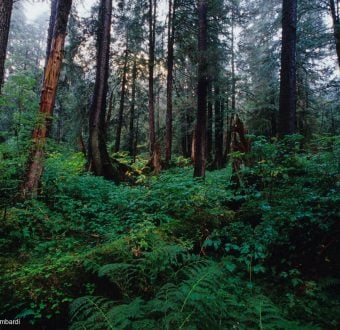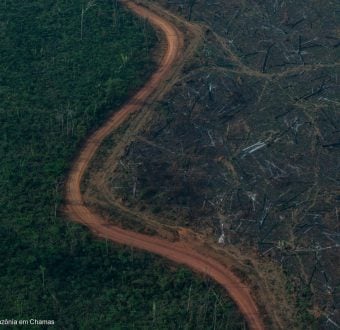
Almost one year ago to the day, Brazilian President Dilma Rousseff said something that made a lot of sense: “Brazil can expand its agricultural production without cutting.” I agree. One year later, however, the president appears more focused on infrastructure projects that will cause further deforestation, rather than to stop it.
October 24th was a holiday in Manaus, the Brazilian Amazon’s largest city of two million people. But I didn’t do any sleeping in, or any lazy coffee drinking over the newspaper.
That’s because Brazilian President Dilma was in the heart of the Amazon today, to open
a new bridge. Three and a half kilometers long over the river, this new bridge opens up access for deforestation to areas that were once difficult to access and therefore, not economically viable. The impact to the other side’ of the river is expected to be dramatic in coming years.
Greenpeace joined the party, by flying our 18-meter hot air balloon above the bridge with banners that called for the President to Stop the Chainsaws’.
The President is celebrating this opening of the Amazon at a time when a debate about changes to the forest code is raging in the Brazilian Senate. If proposed changes to the laws governing forest protection for the Amazon are passed, it would increase deforestation
dramatically and grant amnesty for illegal forest activity.
President Dilma has committed to veto portions of the proposal that would increase deforestation. However, she has been largely silent on the Forest Code of late, taking no visible actions that would enable her commitment while the debate moves forward in the senate.
Actions speak louder than words.
Brazilian Academy of Sciences (ABC) and the Brazilian Society for the Advancement of Science both agree with Dilma – Brazil can grow without more
deforestation. Pastureland for cattle in the Amazon is currently underutilized: 1.1 cows per hectare of deforested land. The Brazilian Academy of Sciences and the Brazilian Society for the Advancement of Science both advocate agriculture and cattle ranching integration in the same area through pasture management based on soil correction, fertilization and the use of other techniques, which have already proven to be successful in various regions of Brazil. There is room to increase productivity of this land, allowing for continued growth without more
forest destruction.
Next year, Brazil will play host to the UN Earth Summit, 20 years after the seminal UN environmental conference in Rio de Janeiro. Already corporations, governments and civil society are calling on President Dilma to demonstrate global environmental leadership in the conference lead up by vetoing the Forest Code changes.
President Dilma has the power to decide the fate of the Forest Code and Brazil’s commitments to stop deforestation and climate change. Only time will tell if she will do more than open bridges and start building them between environment and economy by saving the forest code and investing in a zero deforestation economy.
One thing is for sure, the world is watching.
Stephanie Goodwin is a forest campaigner for Greenpeace International, based in the Brazilian Amazon.

